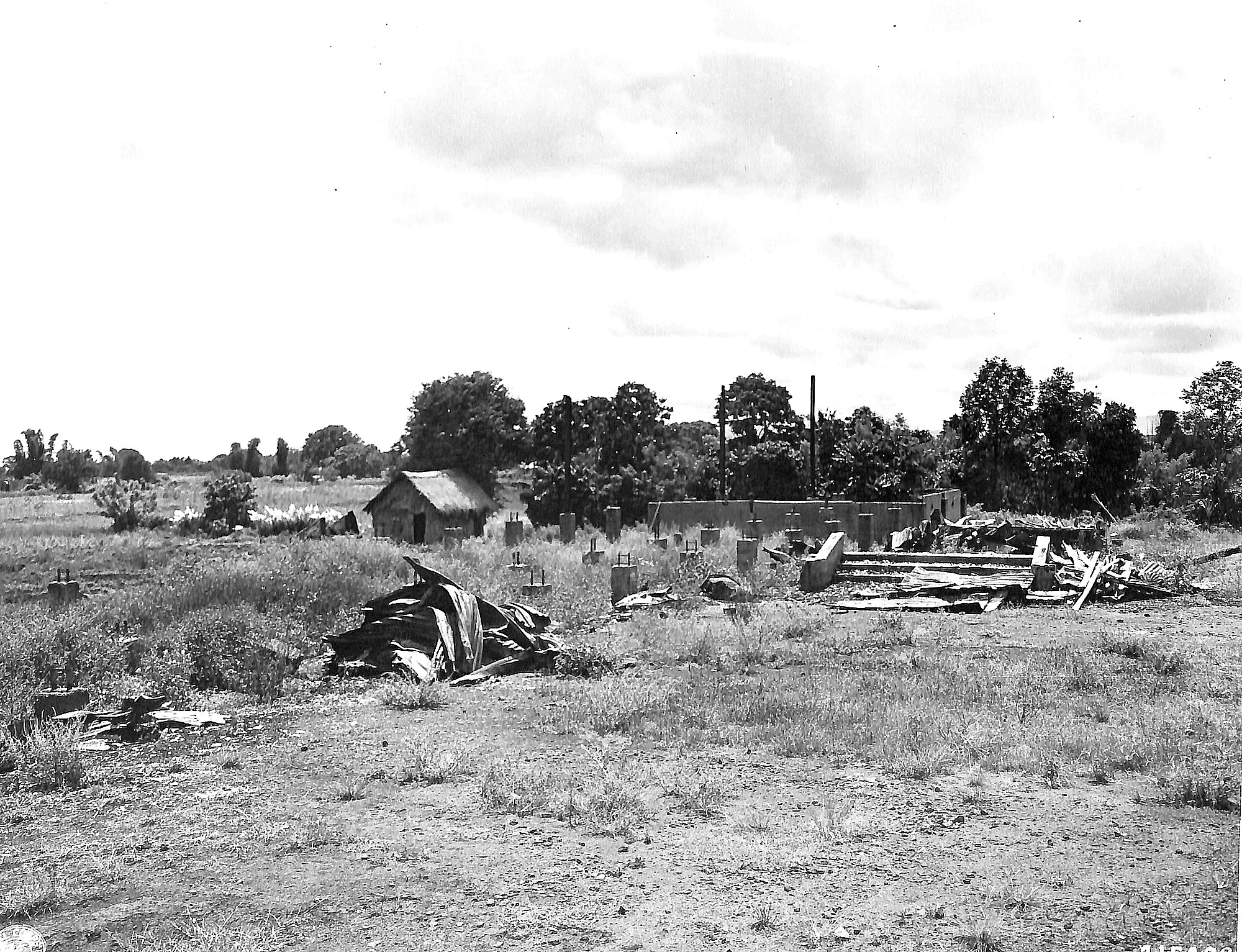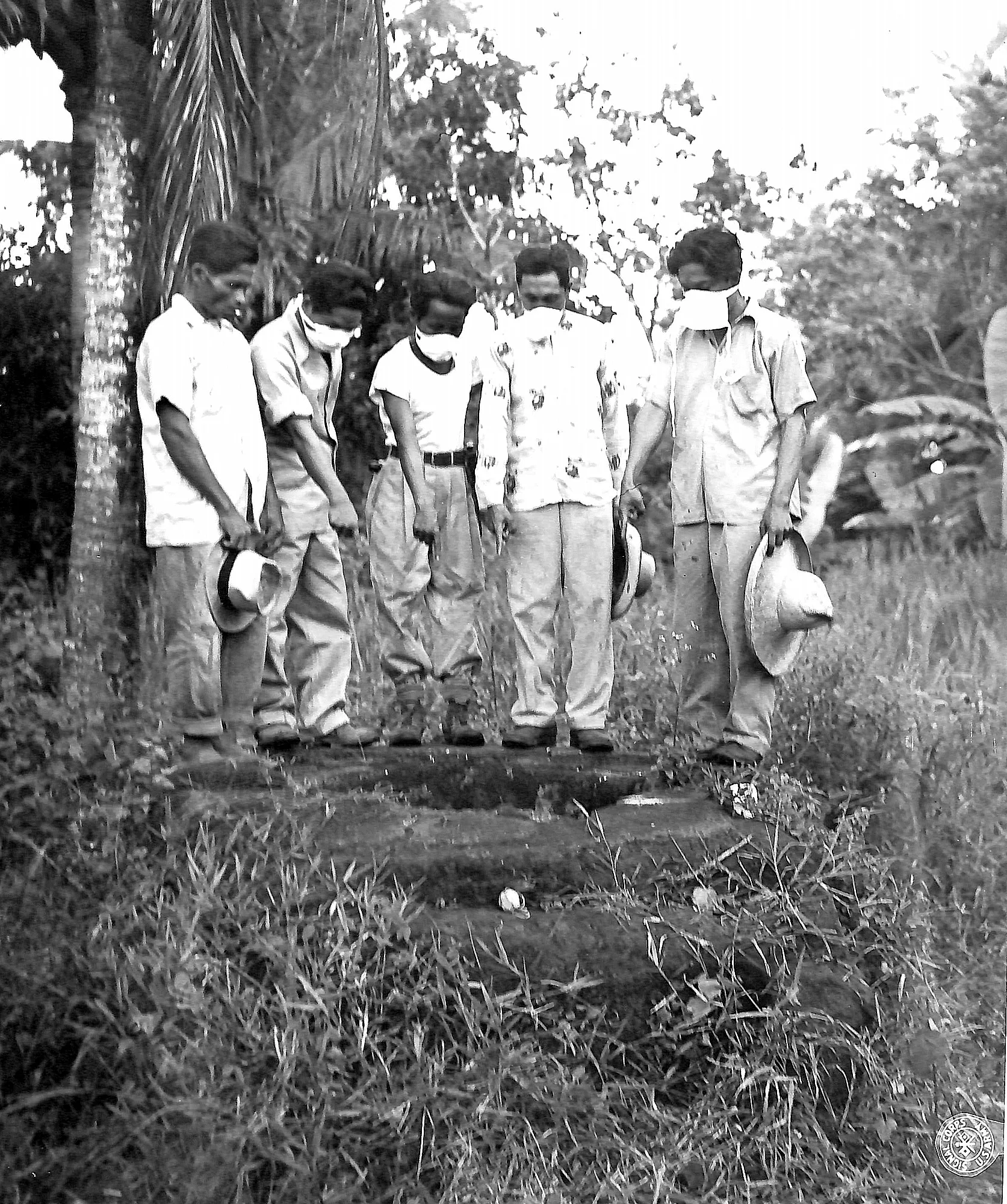The Pamintahan Massacre in Lipa, Batangas in February 1945
Even as memories of the last World War begin to fade, and the younger generations occupy themselves with events more contemporary, there are still, in the now city of Lipa, those who talk about a horrific event that occurred back on the 27th of February 1945 in a locale referred to as Pamintahan.
From stories handed down by the elderly, this event is remembered as the “Pamintahan massacre,” albeit there are also those who simply call it the “Lipa massacre.” The latter is inaccurate because there was, instead, a series of indiscriminate killings committed by the Japanese as the United States Army closed in on Lipa from the north and from the west.
What distinguished the Pamintahan incident from the others was likely the sheer number of civilian males enticed by an insidious ruse to get them to gather, after which they were mercilessly slaughtered. About this, in a 2015 book, author Deidre de la Cruz wrote:
This was how the history of Anilao described the event:
These atrocities were inhumane and indiscriminate – civilian males, women and even children were killed, often left to rot in open fields or dumped in deep wells. Among other things, these acts were apparently retaliatory in nature, as explained by one 2nd Lieutenant Hotagei to a United States Army war crimes investigator after the war had ended:
1 Anilao and Antipolo are barrios or barangays south of the Lipa poblacion or city center.
2 “Mother Figured: Marian Apparitions and the Making of a Filipino Universal,” by Deidre de la Cruz, published 2015 by the University of Chicago Press.
3 “History and Cultural Life of Anilao,” transcription by Batangas History, Culture and Folklore, original documents at the National Library of the Philippines Digital Collections.
4 “History and Cultural Life of Antipolo,” transcription by Batangas, History, Culture and Folklore, original documents at the National Library of the Philippines Digital Collections.
5 Allied Forces arrived at Mindoro from Leyte in December of 1944, in preparation for the landings at Lingayen Gulf and Nasugbu in Luzon, among others.
6 “Statement of 2nd Lieutenant Hotagei,” part of documentation of United States Army war crimes investigation in Batangas, online at Bataan Legacy.
7 De la Cruz, op cit.
From stories handed down by the elderly, this event is remembered as the “Pamintahan massacre,” albeit there are also those who simply call it the “Lipa massacre.” The latter is inaccurate because there was, instead, a series of indiscriminate killings committed by the Japanese as the United States Army closed in on Lipa from the north and from the west.
 |
| The very site where the old seminary was located where the Pamintahan massacre was committed by the Japanese Imperial Army. Image credit: United States National Archives. |
“…at least five hundred male civilians from Anilao and Antipolo1 were rounded up, lured by the promise of receiving passes that would permit their movements throughout Japanese controlled areas… they were marched to a minor seminary that had been established just a few years earlier by the erstwhile bishop of Lipa, Alfredo Versoza… on the embankment facing the Pamintahan brook, the men were bayoneted and their bodies dumped below2.”This event was also documented in the histories of both barrios of Anilao and Antipolo. These barrio histories were written between 1951 and 1953 by public school teachers as required by the government of then-president Elipidio Quirino.
 |
| Survivors of a Japanese massacre in Lipa point at a deep well from where they were rescued. Image credit: United States National Archives. |
“But the most unforgettable event was the massacre of all the male inhabitants numbering (451) four hundred fifty-one, and the burning of the houses totaling (122) one hundred and twenty-two, by Japanese soldiers during the Japanese occupation. This event took place on February 27, 1945. It was followed by the killing of a parish priest and two boys of the locality on February 28 of the same year. The massacre was so insidiously planned that barely seven (7) men escaped its savagery. The male inhabitants were enticed under a pretext of protection and immunity from arrest that they voluntarily assembled in a certain place. They were tied up and bayoneted3.”Meanwhile, the history of Antipolo noted in its account of the same incident a seeming act of cowardice on the part of an unnamed barrio lieutenant who, after calling on the males in the barrio to join the gathering, nonetheless took flight after having apparently sensed the danger.
“In February 1945, an infamous massacre was done to the people of this barrio. The people were finally tricked by the Japanese to go to town on the pretext of giving their passes. The barrio lieutenant called on all the males to join the group going to town. It was, however, discovered that when the group was already in town, the barrio lieutenant could not be located. He, perhaps, having sensed the danger, just sought for his own safety, forgetting to forward any due warning to the people under his care. Since then, those who went to town were never heard of except for one who luckily escaped death, despite his 17 bayonet wounds in all parts of his body4.”As mentioned, the Pamintahan incident was but one of many such atrocities committed by officers and enlisted men of the Japanese Imperial Army as the menacing forces of the United States approached from two directions to envelop them in a classic pincer military maneuver.
 |
| Bodies of massacred civilians left out in the open after they had been stripped of all usable clothing by the Japanese. Image credit: United States National Archives. |
“After the American landing at San Jose on Mindoro Island5, the American aerial bombings became intense and disrupted the peace of Batangas Province. Because there were incidents of shooting at Japanese officers and troops and incidents of raids (attacks on vehicles that broke out all over Luzon), I believe that it was for this reason that there was a change in the way of handling (dealing with) the Filipinos by the Japanese Army6.”As a point of interest, upon the site of the burned down seminary where the Pamintahan massacre was committed would rise, in 1946, the country’s first Carmelite monastery7. It would not take long before this same monastery would become famous not just in the country but around the world for alleged Marian apparitions.
RELATED READING: “WWII Japanese Atrocities Committed in the Barrios of Lipa”Notes and references:
1 Anilao and Antipolo are barrios or barangays south of the Lipa poblacion or city center.
2 “Mother Figured: Marian Apparitions and the Making of a Filipino Universal,” by Deidre de la Cruz, published 2015 by the University of Chicago Press.
3 “History and Cultural Life of Anilao,” transcription by Batangas History, Culture and Folklore, original documents at the National Library of the Philippines Digital Collections.
4 “History and Cultural Life of Antipolo,” transcription by Batangas, History, Culture and Folklore, original documents at the National Library of the Philippines Digital Collections.
5 Allied Forces arrived at Mindoro from Leyte in December of 1944, in preparation for the landings at Lingayen Gulf and Nasugbu in Luzon, among others.
6 “Statement of 2nd Lieutenant Hotagei,” part of documentation of United States Army war crimes investigation in Batangas, online at Bataan Legacy.
7 De la Cruz, op cit.
